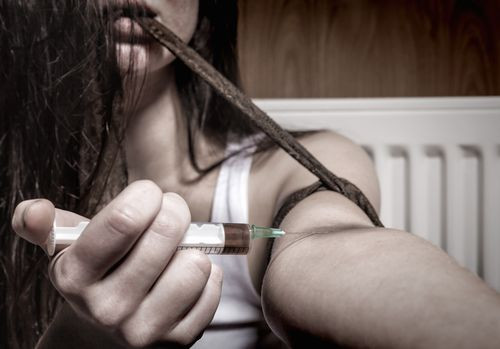Who’s Got A Heroin Addiction? White, Older, Non-Urbanites Who Are Practiced Users Of Prescription Opioids

For years, heroin carried the stigma of being a lethal street drug abused mostly by an inner city crowd of poor minorities with an added dash of artist-hipsters thrown in for good measure; the musicians Miles Davis and Chet Baker as well as beat writer William S. Burroughs were all well-known junkies. Yet anecdotal evidence over the past few years suggests the highly addictive drug has undergone a sea change and now sports an entirely new reputation. Based on a retrospective analysis of the past 50 years, Dr. Theodore J. Cicero and his research team found the face of heroin has indeed changed, at least among those seeking treatment for their addiction. The current population of users surveyed in his new study included more whites than in previous generations, with a majority of users (75 percent) coming to heroin after first using prescription opioids.
“Our data just serves as a warning that heroin has become a mainstream drug … occurring in more suburban and rural areas among white males and females,” Cicero told Medical Daily.
Then and Now
The Foundation for a Drug-Free World counts 9.2 million people worldwide as users of heroin, a drug known for its treacherous withdrawal symptoms. Estimates range from 153,000 to 900,000 current heroin users within the U.S. For the current study, the researchers analyzed data from an ongoing nationwide survey of heroin users who had entered substance abuse treatment programs and agreed to anonymously answer questions as part of the Researched Abuse, Diversion and Addiction-Related Surveillance (RADARS) System. Of the 9,346 opioid-dependent patients, all over the age of 18, who agreed to complete the survey, 2797 reported heroin as their primary drug of abuse (the drug used most frequently in the past month). In addition to the surveys, collected between 2010 and 2013, the researchers conducted interviews with a subset of 54 patients.
Cicero’s motivation to perform a retrospective analysis was simple. “We had been monitoring opiate abuse for the past 15 years or so, we noticed that a sharp increase in the number of people who said they’d taken heroin in the last 30 days,” Cicero told Medical Daily. He and his team had become aware of media reports as well as anecdotal evidence of a changing demographic of users so they set to work in an attempt to better understand the problem.
Crunching the numbers, they soon discovered about 83 percent of respondents who began using heroin in the 1960s were young men at an average age of 16.5 years old. Among these old-time users, the first opioid of abuse was heroin for roughly 80 percent. By comparison, more recent heroin users are older (an average age of about 23), non-city dwellers (75 percent), and their first opioids are prescription drugs (75 percent). Prior to the 1980s, whites and nonwhites were equally represented among first-time users, but nearly 90 percent of users who began on heroin in the years since 2003 are white.
“Heroin is attractive now because it is accessible and cheap,” Cicero explained. People are becoming addicted to pharmaceutical opioids, whether sold on the street or through some valid prescription. Then, when they run out of money to buy these expensive drugs, they often turn to cheaper heroin, which has lost its stigma and is increasingly available. “All the data suggests the number (of opioid addiction) is increasing, but none of us have a fix on what that number may be.” Seemingly, then, more heroin users are in the making.
“They find it more acceptable and that’s a very scary development,” Cicero said. One reason for his fears being a greater degree of uncertainty with heroin. “People are leaving the safety of prescription drug … and taking some powder form of heroin for which they have no idea how pure it is or how adulterated it is,” Cicero commented. “It could be five percent or 10 percent purity. It makes a huge difference when injecting it.” Compared to prescription drug abusers, heroin users are at greater risk of overdose, plus all the dangers surrounding injection: infections, needle sharing leading to HIV and hepatitis C, and a range of other medical complications.
“This is a very ominous development that people need to be aware of,” Cicero concluded.
Source: Cicero TJ, Ellis MS, Surratt HL, Kurtz SP. The changing face of heroin use in the United States: a retrospective analysis of the past 50 years. JAMA Psychiatry. 2014.



























